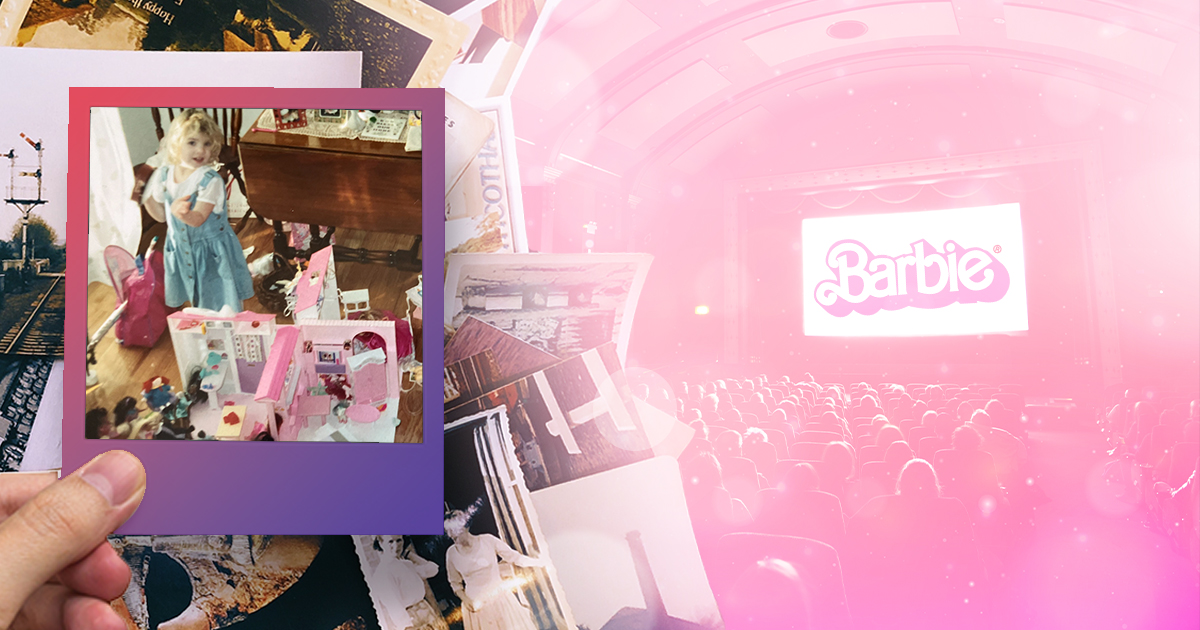
Anna Morcerf
Communications Manager
A quick Google search of “Barbie movie marketing” results in pages of news sources—including The Guardian, The Telegraph, Yahoo News, Entrepreneur, Fortune, and many more—fawning over the multi-million-dollar mega marketing campaign.
As a millennial and a massive fan of Barbie ever since I got my first doll in the late 1990s, I can’t help but wonder: how necessary is this splash—or, really, monsoon—of pink across the globe in having the Barbie movie succeed? Wouldn’t nostalgia be enough to sell movie tickets? Or is this campaign about something more significant?
I decided to ask marketing expert (and Kogod professor of marketing!) Ron Hill to share his thoughts.
Anna: LinkedIn calls the marketing for the upcoming Barbie movie, being released on July 21, 2023, “genius.” Why do you think it is making such an impact?
Ron Hill: The Barbie movie is making such an impact because Barbie has been a universal symbol of womanhood to several generations of young girls, from the Baby Boomers to Millennials. Barbie has meant many things, good and bad, and it is a clear gateway to visualizing yourself as you mature.
From an actual Barbie dream house that people can rent on Airbnb to clothing brand collaborations to viral selfie generators that show the “Barbie version" of yourself—the Barbie movie marketing is surround-sound and everywhere you look.
How do you think the Barbie movie marketing elevates the brand to be more than just a brand or a toy?
This only happens if consumers want to make a good or service more integral to their lives. What makes it so special is that it is part of a consumer journey that leads young people from their original selves into a significant life transition that can be enhanced through fantasy. While we tend to think of fantasy as not reality, it is a safe place to practice becoming an adult without worrying about getting things right or wrong or social embarrassment. Instead, unlike middle school in the US, it is under the child’s control and can be directed in wholly positive ways.
Most marketing attempts to build a unique and consistent image that resonates with consumers and is hard to copy."

Ron Hill
Professor of Marketing, Kogod School of Business
I saw an interesting fact that the movie production used so much pink paint to create the sets that there was a shortage of pink paint for a while. There are even Billboards that are all pink with just the date of the movie release because everyone is so familiar with “Barbie pink.” Can you speak a little bit about this marketing method?
What I find most interesting is that we live in a society that has moved away from strict gender identity, allowing fluidity across traditional boundaries between males and females. It will be most interesting to see how succeeding generations react to such feminine icons, even if Barbie continues bridging the gap in dress, race, and career.
Eight years ago, in 2015, CNN Business posted a story called “Is Barbie Dead?” What do you think shifted the narrative from a state of questioning in 2015 to its current “take-the-world-by-storm” status in 2023?
The move from gendered to non-gendered norms in our society likely is the cause of her potential demise. However, what we have failed to realize is that many people are still attracted to gender icons even if they do not fully live in one’s shadow. For example, my granddaughter loves Disney princesses and dresses accordingly. However, I rarely encounter a more competitive child on an athletic field! In some ways, she adheres to traditions—in others, not so much. However, one can enjoy and play with Barbie without embracing everything she might be perceived to stand for. That is consistent with greater gender possibilities.
Y2K and 90s grunge have made a comeback with Gen Z fashion. Since Barbie is so tied to fashion, how do you think nostalgia marketing plays into the Barbie movie marketing efforts?
Parents and older mentors may be the ones to introduce children to Barbie, even as other trends come and go. Regardless, young kids are attracted to Barbie’s image because it sends signals of fun, sophistication, and positive energy. Why not live in her world part of the time?
Trends tend to spread to other products over time if successful and long-term."

Ron Hill
Professor of Marketing, Kogod School of Business
As mentioned earlier, several clothing brands have come out with special Barbie collaborations, whether officially linked to the movie or not. Is it wise for less relevant brands to increase their relevance by jumping onto the Barbie bandwagon right now?
If it were me, I would develop fashion items allowing parents and their children to share similar clothing and accessories. In many ways, it can be a shared fantasy where the parents can relive their Barbie time, and their children can learn from examples how to be successful as they grow up. I love watching the movies we shared with my kids with their children now. That is the best part of growing up or old!
What do you think will happen after the major movie buzz? At a certain point, the excitement will climax, and then the movie will leave theaters, and the media will move on to the next thing. How can Barbie beat the excitement fizzling out and ensure the brand and lifestyle remain relevant for at least another 64 years?
Many of these trends are cyclical and will repeat every few years. Disney is an expert at moving various icons in and out as generations come and go. Barbie likely will wax and wane, but she will always be there, even if Ken is not!
People who may otherwise not have been interested in Barbie might want to see the movie—to be part of the zeitgeist, so to speak. What do you think of this? Do you plan to see the film?
People do see films to be relevant in their social groups, but I expect Barbie to be highly successful with some and a thorn in the side of others. That is fine; consumers should vote with their feet to go or not go to theaters. I’m off to see Oppenheimer, but if my granddaughter wants to go, I’m happy to see Margot Robbie in her finest attire!
Is there anything else you would like to add?
There is a contingent of diverse people who have felt ignored by beauty standards based on white skin and blond hair, particularly among women. Barbie has evolved to become more diverse, but the icon is clear: we need to consider how people feel.
